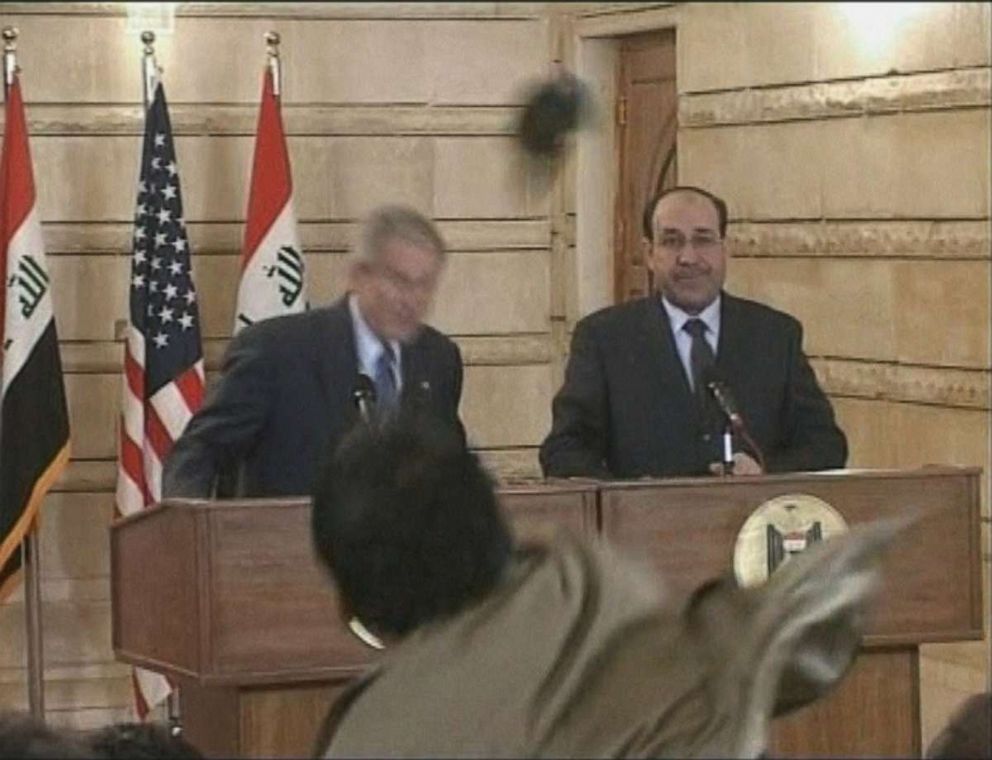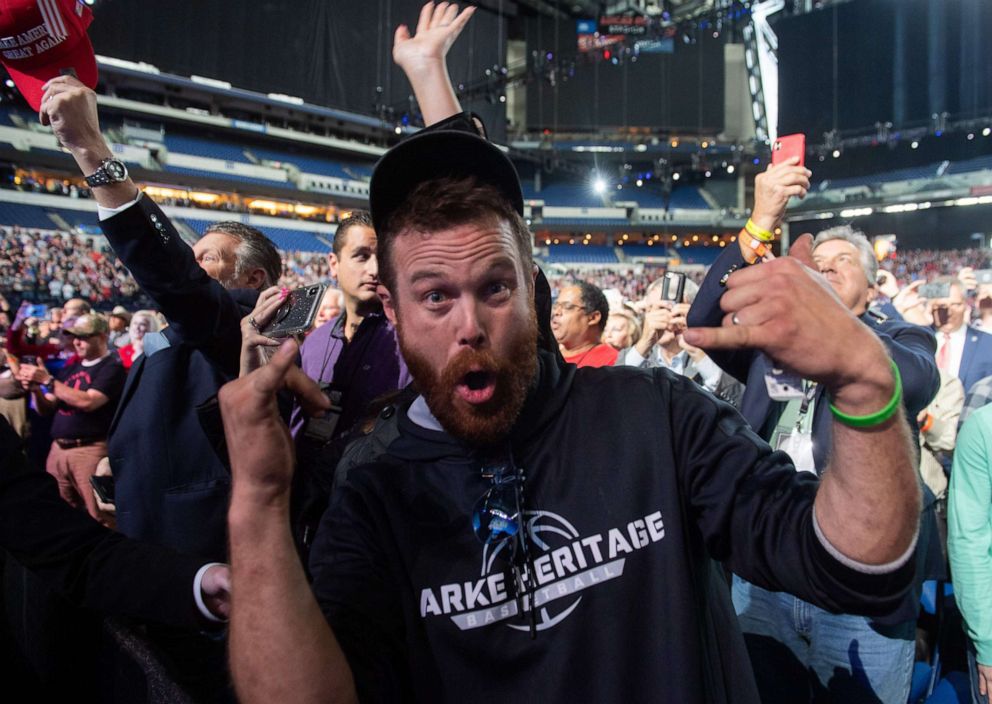How the Secret Service handles threats against the president: ANALYSIS
They're working on multiple fronts to protect the commander-in-chief.
The president walked toward a podium at the National Rifle Association conference last week and noticed something flying through the air and landing on the other side of the stage.
The individual who threw the object was quickly identified and apprehended by police and escorted out of the event venue.
The Secret Service issued a statement saying, "At approximately 12:30 p.m. (ET) today, President Trump was at an event in Indianapolis, Ind. As the President was walking onto the stage, but prior to his remarks, a cell phone from the crowd landed on the opposite side of the stage. An individual was removed from the event and the investigation is continuing."
Outbursts at presidential events can be expected -- few can forget the 2008 incident in Iraq in which a member of the Iraqi press threw his shoes at President George W. Bush, who deftly dodged each shoe -- and as the 2020 campaign ramps up, candidates can expect this type of behavior to become more pronounced.

But the Secret Service is prepared, with a layered system of protection from all types of 21st century threats, from the unrefined concepts of throwing things at someone to the more sophisticated online threats.
Threats against politicians date back eons, although the current U.S. law barring threats against the president wasn't enacted until 1917. Today, though, technology enabled elements within our society to find "cover" when making a threat, and at times, the internet can allow threats to come into the Secret Service in a rapid fire fashion.
In fact, the majority of threats come from the cyber world, which makes tracking, tracing and determining intent more difficult and time consuming.
The cyber world adds the ability to hide and, in some cases, erase a suspect's tracks, which is virtually impossible if a threat is in written or verbal form, so the Secret Service has worked to create technologies that can uncover cyber tracks.
On average, President Donald Trump receives six to eight threats per day, CBS reported the Secret Service director said in 2017, which averages to over 2,000 threats per year. This follows a typical average of threats against a president.
Often when the president is out very publicly touting a policy issue, on the campaign trail or making statements viewed by some as controversial, the threats increase. As they disappear into the world of a 24/7 news cycle and other stories take the lead, the threats tends to diminish.
That isn't to say the Secret Service doesn't have its hands full with threat cases, though.
Under U.S. law, a threat against the president and his or her successor is a federal felony.
A threat is defined as someone "knowingly and willfully" making "any threat to take the life of, to kidnap, or to inflict bodily harm," under the law, and it adds that a person making a threat "shall be fined under this title or imprisoned not more than five years, or both."
"Knowingly and willfully" translates to opportunity and intent, and it's up to Secret Service to determine the veracity of a perceived threat. There is no science to this. It takes interviews, investigations and some expertise to make a determination, which can also be tricky because no one can predict an individual's future actions.

Some "threats," perhaps like at the NRA conference, may erupt when alcohol and immaturity meet and, after an interview and investigation, can be determined to lack the "willfulness" part of the law.
In those cases, when confronted with the incident, the individual usually re-cants. If a mental health issue is identified, the individual could also be referred to a mental health agency for an assessment.
To work through these issues, the Secret Service National Threat Assessment Center (NTAC) produced two groundbreaking studies, Threat Assessment: An Approach to Prevent Targeted Violence (1995) and Threat Assessment: Defining an Approach for Evaluating Risk of Targeted Violence (1999), which emphasize the importance of identifying concerning behavior early on and doing a thorough investigation of an individual who may pose a threat as keys to a threat determination.
Although this provides a roadmap, the studies also signaled a warning: "Assessments of targeted violence pose a significant challenge to law enforcement, mental health, and other professionals. Nevertheless, those who engage in behavior or communication of concern must be assessed."
As with school shooters and others who commit acts of targeted violence, an assessment is key to understanding, yet often those assessments are not done, misunderstood or done after the fact.
Which brings us back to the NRA incident. While this individual may have shown no signs of posing a threat, clearly at the event something triggered his actions. Maybe he said something to someone, maybe he didn't, but a full investigation will make that determination.
Although threat assessment is difficult, over the years, the Secret Service protocols have thwarted countless incidents. As the 2020 campaign ramps up, one thing is certain: the threats will roll in and the agents will continue to be the protective line that works to keep them all safe.
Donald J. Mihalek is an ABC News contributor, retired senior Secret Service agent and regional field training instructor who also serves as the executive vice president of the Federal Law Enforcement Officers Association Foundation.



